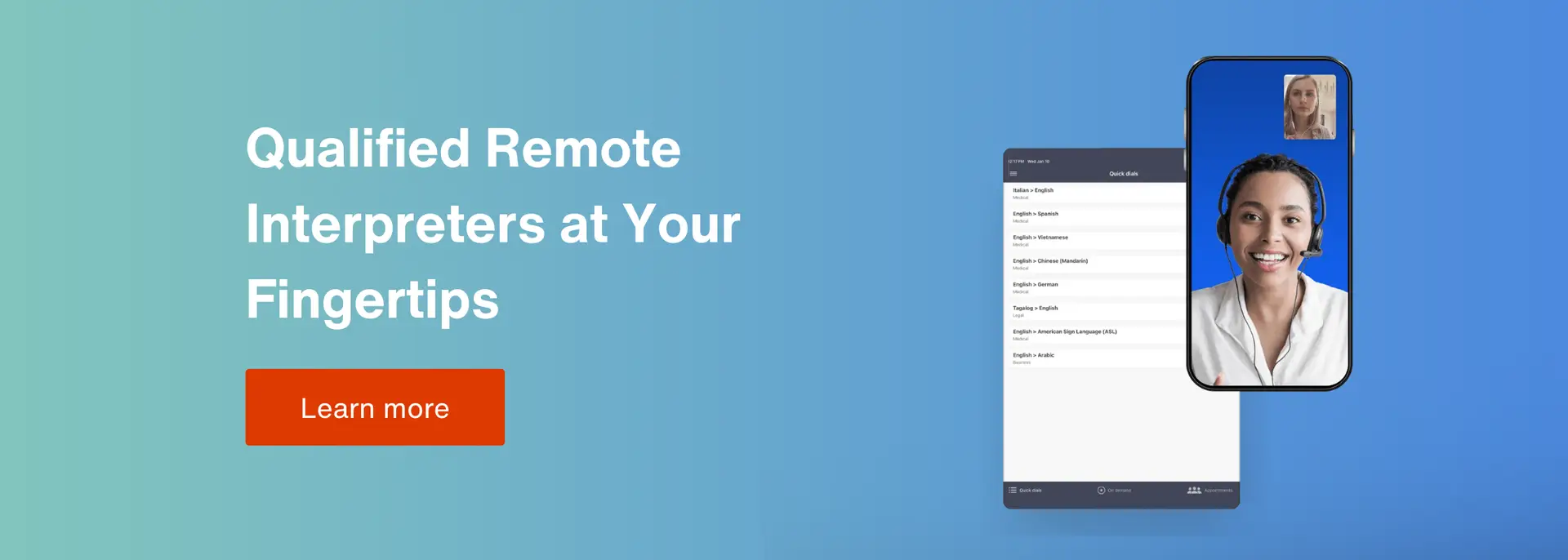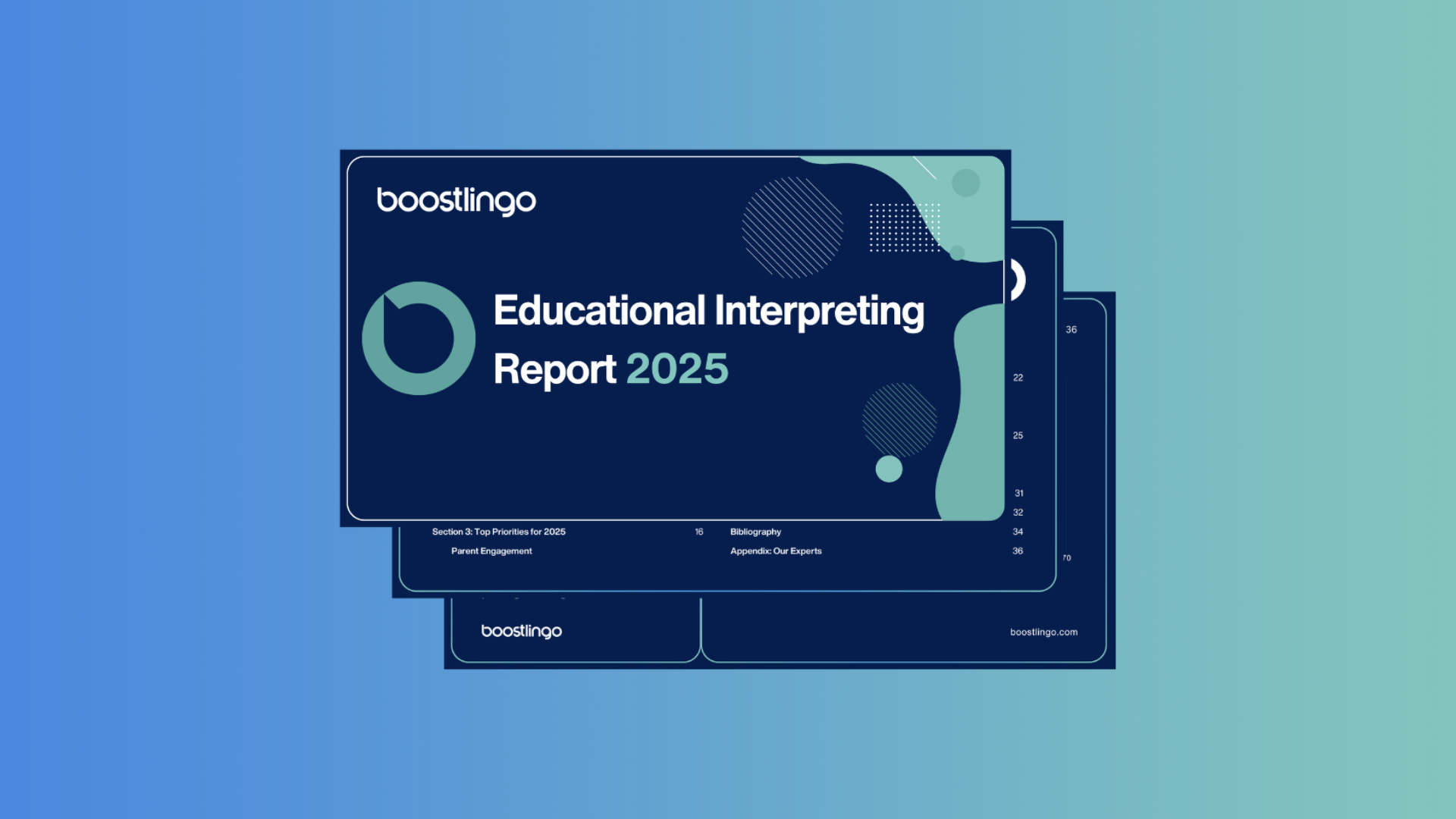In business interpretation, healthcare interpretation, education interpretation, or even courtroom interpretation, there can be situations where the requestor’s language is not easy to identify. Caroline, an interpreter herself, gives some tips on how to identify spoken languages in those contexts.
Before hiring an interpreter, an administrator needs to identify the spoken language required for interpretation.
While this may sound obvious, interpreters still join sessions where the language has been incorrectly chosen. Afrikaans interpreters, for example, are often asked to assist people from various African countries—even though Afrikaans is mainly spoken in South Africa and Namibia. Verbally confirming a language for interpretation can be difficult, especially when the language is obscure or is named differently in English than it would be to a native speaker.
Fortunately, there are a few ways to identify which language someone speaks and connect with the right interpreter services on the first try. These include language cards, text translation apps, and speech translation apps. Here’s a look at five of the best options available:
I Speak Cards
Often found in government offices for legal and social services, I Speak cards are PDF documents with the statement “I speak (language)” in various languages. The person who needs language services simply points to the right one on the list. Here’s an example from the United States Department of Agriculture (USDA).
Section 1557 requires covered entities to notify individuals of their language access rights, and I Speak cards can help fulfill this requirement.
You can create a custom I Speak card to include the most common languages in your area. Let’s say there’s a large Mixteco speaking community where you live. You can add Mixteco and other indigenous languages to the list.
The major drawback of I Speak cards is that the person must be literate and not have a visual impairment to identify the language.
Where to get one: A translation agency may offer better interpreter service options based on your specifications.
Cost: Varies by translation agency
Request a document translation quote for an I Speak Card based on your language needs.
Translation Apps to Identify Spoken Languages
While translation apps will not serve as a replacement for interpreters, most of them will be able to handle the exchange required to identify a language.
To identify someone’s native language, set the language as “Detect Language” — located at the top of each language list — and ask the requestor to type in a sentence. These translation apps will then auto-detect the language and provide interpreting services.
*Note: these applications do not support “Detect Language” for voice-only translations, but there is a work around. For non-literate requestors (those unable to simply type in a sentence into the textbox), use the voice to text feature on your keyboard. Click the microphone and have the requestor speak a sentence. It may require a few tries, but eventually the voice-to-text should create a sentence these apps can use to detect the language.
iTranslate
The iTranslate app translates text in over 100 languages and translates speech in 40 languages. The Pro version includes real-time voice communication and lets you instantly translate an image using a camera. You can even use the app without an internet connection.
Like all translation apps, the biggest drawback is the limited number of languages of lesser diffusion available. Most languages available for speech translation are world languages. However, you could take a photo of a document from the person’s home country to identify the language in written form.
Where to get it: Apple Store, Google Play
Cost: Free; $5.99 per month or $69.99 per year for iTranslate Pro
Google Translate
The Google Translate app translates text in 108 languages and translates speech in 32 languages. To identify someone’s native language, set the language as “Detect Language” — starred at the top of the language list — and type in a sentence. Translate will then auto-detect the language. Translate also offers auto-detect options for images if you have a document written in the requestor’s native language.
Where to get it: Apple, Google Play
Cost: Free
Microsoft Translator
The Microsoft Translator app translates text in over 100 languages and translates speech in 30 languages. It includes a split screen mode that helps you follow the conversation, as phrases are translated simultaneously. You can also take photos of text or scan it from screenshots on your phone.
Where to get it: Apple, Google Play
Cost: Free; Paid version varies by plan
Speak & Translate
The Speak & Translate app translates text in 117 languages and translates speech in 54 languages. The premium version works offline and includes an unlimited number of translations.
Where to get it: Apple
Cost: Free; $5.99 per month or $69.99 per year for premium version
Have you used any of these language identification tools? How are they as interpretation services? What work arounds are you using to communicate with non-literate requestors? Let us know in the comments!
After Identifying the Spoken Language
Identifying the correct language is the first step for administrators in providing effective language services. I Speak Cards and translation apps can help overcome the challenges of language identification and connect with the appropriate interpreting service. However, each tool has its limitations—such as literacy requirements or limited language availability—so it’s smart to have multiple tools to be ready for every situation.
Need help setting your team up for success with language identification or interpretation services? Contact us today to create personalized I Speak Cards.
Explore our on-demand solution for 24/7 access to qualified remote interpreters.




